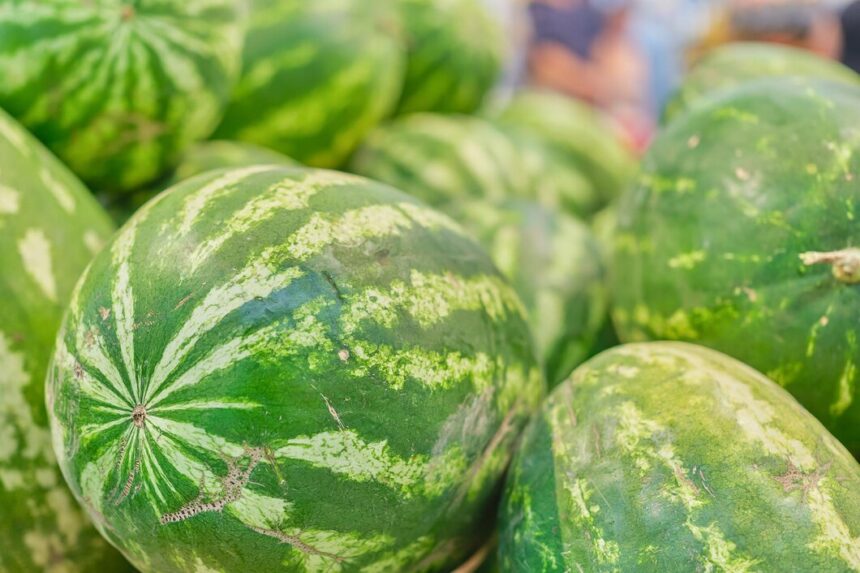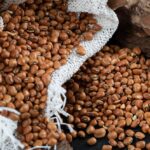Watermelons are a popular crop among South African farmers due to their high demand and profitability. Successfully growing watermelons requires careful planning and attention to detail throughout the entire cultivation process. This article outlines the essential stages of growing watermelons, the necessary inputs and machinery, potential diseases, pest management, and effective storage methods.
1. Land Preparation
Soil Type:
Watermelons thrive in well-drained, sandy loam soils with a pH between 6.0 and 7.0. Ensure the soil is rich in organic matter, as this enhances moisture retention and nutrient availability.
Preparation Steps:
- Clearing: Remove weeds, stones, and debris from the planting area.
- Tillage: Use a plow or rototiller to break up the soil, improving aeration and drainage.
- Soil Testing: Conduct soil tests to determine nutrient levels and pH. Amend the soil as necessary to create optimal growing conditions.
2. Selecting and Preparing Seeds
Seed Selection:
Choose high-quality, disease-resistant watermelon varieties suited to your climate. Popular options include:
- Crimson Sweet: Sweet, red-fleshed variety.
- Sugar Baby: Smaller variety, ideal for home gardens.
- Charleston Gray: Disease-resistant with good shipping quality.
Seed Treatment:
Soak seeds in a mild fungicide solution for a few hours to prevent diseases before planting.
3. Planting
Timing:
Watermelons are sensitive to frost. Plant seeds after the last frost date, typically in late spring or early summer when soil temperatures are consistently above 18°C.
Planting Method:
- Direct Seeding: Plant seeds 2.5 cm deep in rows spaced 1.5 to 2 meters apart.
- Seedling Transplants: Alternatively, start seeds in seed trays and transplant seedlings when they are about 15 cm tall, ensuring they have 2-3 true leaves.
Inputs Required:
- Seeds: Ensure enough seeds for your planned planting area.
- Watering Equipment: Use irrigation systems such as drip or sprinkler systems to maintain adequate moisture.
4. Watering
Water Requirements:
Watermelons require about 25-50 mm of water per week. During the early stages, ensure consistent moisture to promote germination and seedling growth. Once established, water deeply but less frequently to encourage root development.
Frequency:
Water every 3-7 days, depending on rainfall and soil moisture levels. Adjust the frequency during flowering and fruit set to maintain moisture without causing waterlogging.
5. Fertilization
Nutrient Needs:
Watermelons require balanced fertilization. A general guideline is:
- Pre-Planting: Incorporate well-rotted manure or compost into the soil before planting.
- Early Growth: Apply a nitrogen-rich fertilizer (such as 10-10-10) when seedlings are established.
- Fruit Development: Switch to a fertilizer higher in potassium and phosphorus (such as 5-10-10) during flowering and fruit set.
Application Method:
Apply fertilizers in bands on either side of the plants, avoiding direct contact with the stems.
6. Growth Stages
- Germination (1-2 Weeks): Seeds sprout and develop initial leaves. Ensure consistent moisture during this stage.
- Seedling (3-4 Weeks): Plants develop true leaves. Thin seedlings to ensure proper spacing for airflow and sunlight exposure.
- Vigorous Growth (4-6 Weeks): Plants grow rapidly. Ensure adequate nutrients and water.
- Flowering (6-8 Weeks): Flowers appear. Monitor for pollinators, as they are crucial for fruit set.
- Fruit Development (8-12 Weeks): Watermelons grow rapidly. Ensure consistent watering and nutrient availability.
- Maturity (12-14 Weeks): Watermelons ripen. Look for signs such as a dull skin and yellowing tendrils.
7. Pest and Disease Management
Common Pests:
- Aphids: Can transmit viruses; control with insecticidal soap or neem oil.
- Spider Mites: Cause yellowing leaves; use miticides if infestation is severe.
- Cucumber Beetles: Can damage plants; use row covers to protect young plants and apply insecticides as needed.
Common Diseases:
- Powdery Mildew: Fungal disease; treat with fungicides and ensure good air circulation.
- Fusarium Wilt: Soil-borne fungal disease; practice crop rotation and use resistant varieties.
- Downy Mildew: Affects leaves; use fungicides and remove infected leaves promptly.
Pesticide Use:
Only apply pesticides or herbicides as a last resort and according to manufacturer instructions. Integrated pest management (IPM) strategies, including cultural practices and biological controls, are encouraged.
8. Harvesting
Timing:
Harvest watermelons when they are fully ripe, indicated by a dull skin, yellow spot on the ground, and a hollow sound when tapped.
Harvesting Method:
Use a sharp knife or pruning shears to cut the fruit from the vine, leaving a short stem attached.
9. Storage
Post-Harvest Handling:
- Cleaning: Gently wash watermelons to remove dirt and debris.
- Cooling: Store in a cool, shaded area to prolong shelf life.
Storage Conditions:
Keep watermelons at temperatures between 7°C and 10°C, ideally in a humid environment. Proper storage can extend the shelf life to several weeks.
Growing watermelons can be a rewarding venture for South African farmers when approached with careful planning and management. By understanding the growth stages, employing effective pest and disease management strategies, and ensuring optimal growing conditions, farmers can maximize their yield and profitability. With the right practices, watermelons can provide a significant return on investment and contribute to food security in the region.







